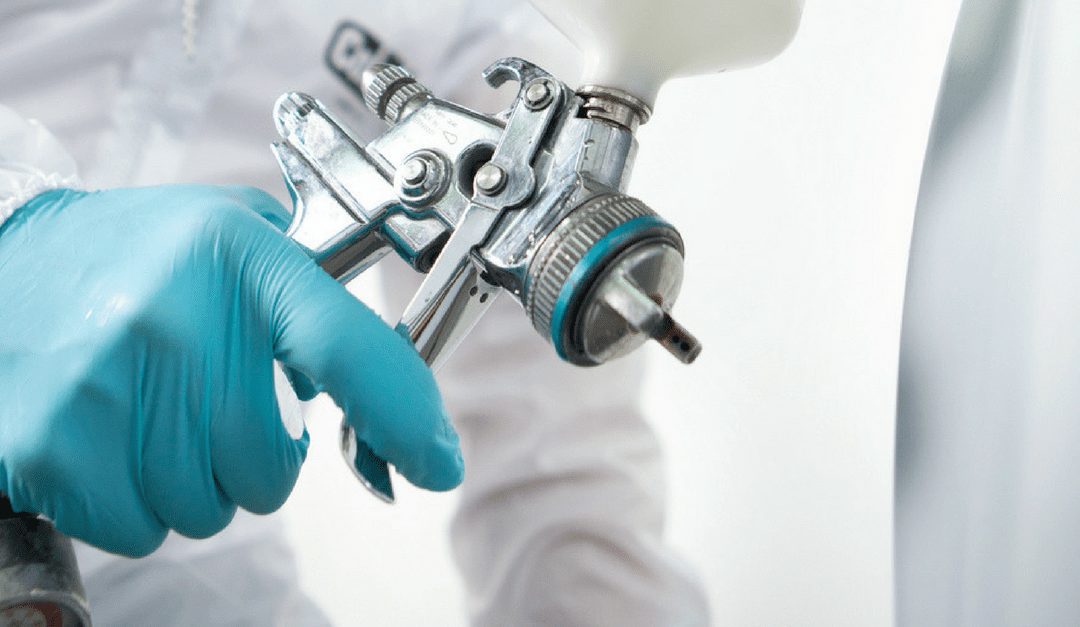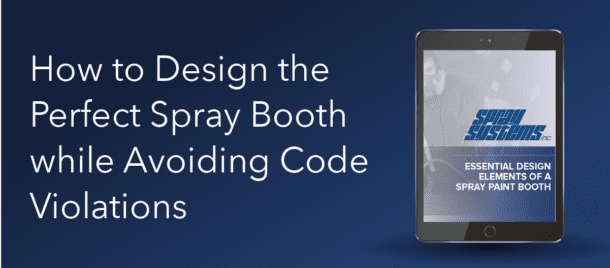There are dozens of different techniques available to manufacturers and finishers when applying paint or finish to a manufactured product. There are specific advantages and drawbacks to each of the application methods and many of them have several variations that are best-suited for specific circumstances. This makes it imperative for you to understand your logistical and budgetary requirements in order to select the right method for your operation. Take a look below, where we breakdown the benefits and drawbacks of the most common types of application methods.
Spray Methods
Spraying is the most prevalent paint and finish application technique among industrial manufacturers due to its versatility and economic viability. There are a variety of different types of spray methods currently in use, including:
- Air-atomized
- Airless
- Electrostatic
- High-volume, low-pressure
Air-atomized Spray
Air-atomized applications are the conventional approach to spray painting. The applicator consists of a traditional spray gun that combines compressed air with liquid flow to create a pressurized mist that coats the object. Since the equipment can be adjusted and customized to suit the needs of the operator, air-atomized applications are highly flexible and can be used on almost any kind of substrate.
One of the primary drawbacks of air-atomized technology is loss of paint. The equipment has poor transfer efficiency compared to other application methods, although the relatively low labor requirements can help offset the material costs. Spray booths also need to be sufficiently exhausted to ensure workers are not exposed to dangerous levels of airborne chemicals.
Airless Spray
Rather than mixing liquid paint with compressed air, airless application equipment simply forces the liquid coating through a narrow opening to create pressure. This method propels paint particles at a lower velocity than conventional air-atomized equipment, so there is less loss of paint through overspray. While it does offer several advantages over conventional techniques, airless spraying also requires additional equipment maintenance as well as advanced skill on the part of the operator.
Electrostatic Techniques
Electrostatic applications are a relatively modern innovation that offers exceptional transfer efficiency compared to other spray techniques. The equipment charges the paint particles with high voltage, causing them to be attracted to the surface of the part and will actually wrap around the part which increases transfer efficiency. This allows for a smooth and solid coat with minimal effort, even for objects with corners and contouring.
While this method can reduce wasted materials significantly, it also requires skill and precision to safely use. Electrostatic equipment is designed for specialized paints that have a specific conductivity, so the options are limited to specific chemical compositions. This technique also presents a more significant fire hazard in the workplace.
High-volume, Low-pressure (HVLP)
HVLP spray equipment utilizes spray gun atomization technology that propels large quantities of low-pressure air to the gun applicator. Since the paint is released at a lower velocity, this technique yields less overspray and blowback than conventional air-atomized equipment. While the apparent benefits seem advantageous, it’s also important to note that HVLP applications require more experienced painters due to the higher transfer efficiency.
Other Paint Application Methods
Although they tend to be the most commonly used application methods, spray applications are not the only option for manufacturers and finishers. Two of the commonly used paint application methods that don’t utilize the spraying technique are:
- Brushing
- Dipping
Brushing
As the name implies, brushing uses a paintbrush to apply paint or finish to a component. The paint’s consistency is a key factor in successful brushing applications. Thin paints may not cover the surface adequately while thicker paints can pull and rope under the brush. Without proper consistency, brush marks will likely remain after the application is completed. The risk of a lower-quality finish means that brushing is typically not used for decorative finishes.
Brushing is most commonly used to cover areas after repairs. A small area is typically not worth an entire spray application and the dipping method is not effective for assembled components. Additionally, brushing can also be good for hard-to-reach places.
Dipping
Dipping is a technique that is most often used for applying primers and involves completely submerging the parts in a tank. This is effective for fully coating components, which makes it a great choice for applying protective coatings. Fully immersing the parts ensures that all areas will be sufficiently coated; however, this typically does not provide a high-quality finish due to drips when the parts are hung to dry.
Additionally, dipping is a poor choice for finishing larger components as the size of the tank becomes cost-prohibitive. Dipping is most often used in factories and at large repair stations.
In general, the dipping paint application methods are best suited for:
- Small components
- Protective coatings
It’s essential to anticipate your own needs in detail before making a decision regarding a specific paint application method. Not all application methods are appropriate for all companies, so it’s imperative for you to understand your logistical, budgetary and operational requirements in order to select the right method for your operation. As a leading supplier of spray paint booths, our experts will help ensure that you’re making the most informed decisions that best suit your operation and facilities.

